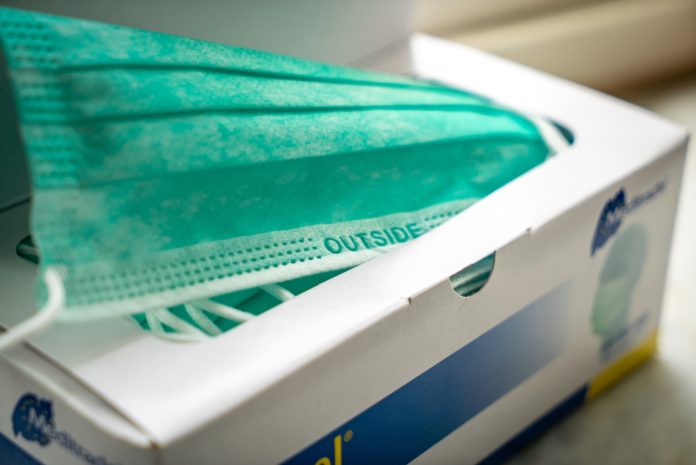
A coalition of expert projects mentions that there could be over 400,000 infections and 12,000 deaths among red light area workers and residents in the next year if they are reopened. Experts created the model at Harvard Medical School and the Yale School of Medicine. It projects that more than 90% of these cases and deaths in cities like Kolkata, Pune, and Nagpur could be prevented by the time the epidemic would peak by keeping red light areas closed. More information can be found here.
Speaking about the findings, Abhishek Pandey, Yale University, co-author of the study, said, “Residents of red-light areas including sex workers, pimps, and brothel managers are at higher risk of infection. By keeping red light areas closed until there is an effective preventive measure, thousands of deaths among residents of red-light areas can be averted.”
The model projects that West Bengal’s red-light areas will experience over 2,000 deaths of sex workers and red-light area residents if they reopen. West Bengal’s largest NGO working with sex workers, Durbar Mahila Samanwaya Committee (DMSC), has a membership that includes about 65,000 sex workers spread across 50 red light areas in the state. Smarajit Jana, a doctor and chief advisor of DMSC, said, “It would be of great danger if the sex workers are allowed to operate as soon as the lockdown is lifted. Due to their nature of work and the congested way they live, one single case can infect a hundred.”
Maharashtra will also be one of the worst affected states. In Pune’s Budhwar Peth, 4,795 cumulative cases, 688 hospitalizations, and 162 deaths. In Mumbai’s Red-Light Area of Kamathipura, Grant Road, and Faulkland Road, 3,494 cases, 486 hospitalizations, and 114 deaths. In Nagpur, Itwari Chowk can face 1,667 cases, 236 hospitalizations, and 56 deaths. In the capital city, New Delhi, the GB Road Red Light Area could experience 2,774 cases, 386 hospitalizations, and 91 deaths.
Sahayakan, a member of Code Red Coalition, a global coalition of doctors and researchers advising governments on how to prevent Covid-19 spread, said, “None of the protection measures like distancing, masks, or sanitizing can effectively stop Covid-19 transmission among sex workers. It can result in many cases and deaths in sex workers and citizens.”
Politicians in Germany called for brothels to close permanently and wrote letters to the premiers of all German states stating, “It should be obvious that prostitutes could become epidemiological ‘super spreaders’ — sexual activities are, as a rule, not compatible with social distancing measures.” The German lawmakers stated, “Reopening the brothels will not help these women. Instead, they need apprenticeships, training, or work in a secure job.”
If red light areas reopen, lakhs of customers infected by sex workers can spread the infection across cities and the country causing a surge of cases. India would need 70 % more hospital beds by the peak if red light areas reopened instead of stayed closed. It would push India over peak medical capacity sooner. Fewer sick people would be able to receive treatment causing an increase in preventable deaths.
Commenting on the report, co-author, Sudhakar Nuti, Harvard Medical School, said, “The Indian government has implemented smart and effective measures to flatten the curve, but it is unlikely for the pandemic to be resolved until there is a vaccine. It is therefore important that red light areas remain closed until a vaccine is developed and widely distributed to protect sex workers and the population at large”. Government restrictions on this part of the informal economy have not been outlined in Covid-19 directives, but a sex worker in Mumbai was quoted in a media story stating, “There will be no business in Kamathipura next two years. We can only return when there’s a Covid-19 vaccine.”
The study recommends that sex workers need opportunities to gain skills that employ lower-risk jobs. Recent media reports show that some sex workers have begun exploring other employment options. In Andhra Pradesh, a collective has asked for an exit strategy for sex workers, including “transitional housing, bank loans, and alternate employment.” The efforts to close India’s red-light areas and help sex workers find lower-risk jobs would save many lives.
The scientific model was applied to multiple cities across India. If red light areas are kept closed, then cumulative cases and deaths at the peak could be reduced by over 90% percent in these areas, such as Nashik, Jalgaon, Meerut, Silchar, Satara, Siliguri, Pune, Nagpur, Kolkata, and Durgapur. In Thane, New Delhi, Sonarpur, Guntur, and Sangli, there can be over 60% reduction in the cumulative cases and deaths at the peak. The findings and recommendations have been shared with central, state, and local governments.








